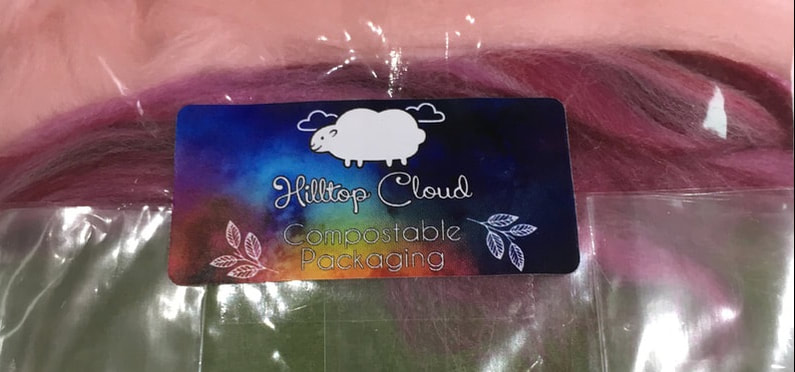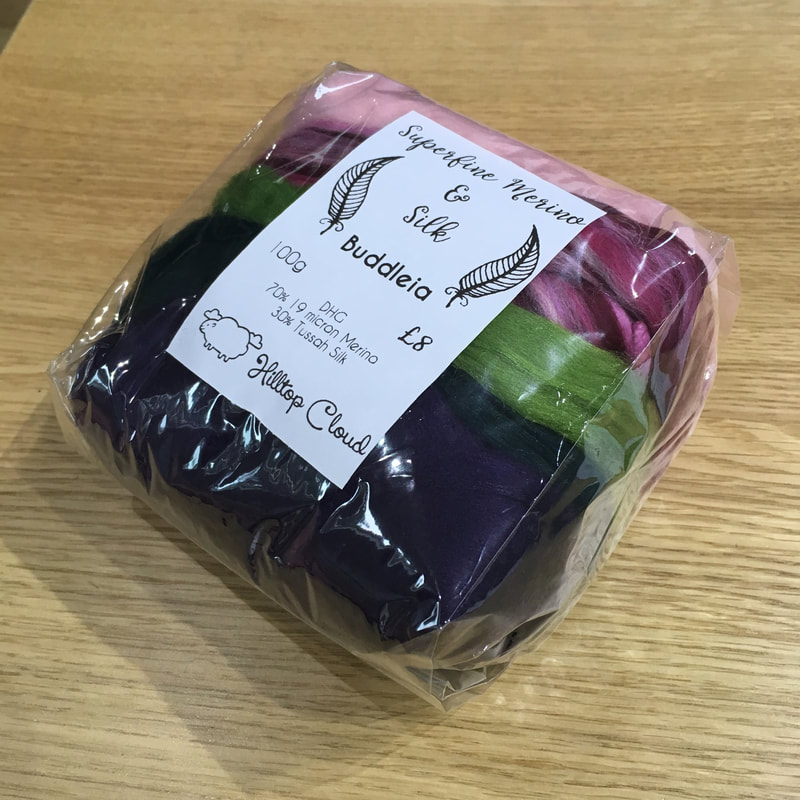We have a minimal approach to packaging....
Hilltop Cloud has always tried to use packaging responsibly.
In general if a piece of packaging is there, it's because it needs to be there. It's designed to keep your fibre safe, while it travels through the postal system.
We don't include lots of extra "stuff", we don't do gift-style wrapping. We use quality packaging that can often be used again and again.
There is no one size fits all solution for sending out the fibre that we stock, fibre is a very different beast to pack compared to yarn. Paper bags or tissue paper don't survive the post well, and provide absolutely no protection for the fibres. I would rather use a solution that gives protection to your order, than something that only looks pretty, and then is immediately thrown away.
In general if a piece of packaging is there, it's because it needs to be there. It's designed to keep your fibre safe, while it travels through the postal system.
We don't include lots of extra "stuff", we don't do gift-style wrapping. We use quality packaging that can often be used again and again.
There is no one size fits all solution for sending out the fibre that we stock, fibre is a very different beast to pack compared to yarn. Paper bags or tissue paper don't survive the post well, and provide absolutely no protection for the fibres. I would rather use a solution that gives protection to your order, than something that only looks pretty, and then is immediately thrown away.
|
Gradient Packs, the Never Ending Gradient Club and other mixed colour packs are packed in clear film based bags.These are a cellulose film bag. This is made from wood pulp that comes from managed plantations. It is compostable, and can be added to your home compost heap, where it should break down like any other plant based material you add. If your fibre is packed in a cellulose bag then the closure sticker will tell you that it is compostable.
If you don't have a home compost heap then these bags will still break down in a landfill environment, so you can include them in your household rubbish. You can try adding them to the compostable waste collected by your local council, but because they still look like plastic you may find they refuse to collect your waste. |
Larger orders are sent in grip seal plastic bags that are made from recycled plastic. These provide excellent protection for your fibre, and can be used over and over again. Once they are worn out they can be recycled further. In the UK most supermarkets now have soft plastic recycling points.
The mailer bag for smaller orders is now paper, I use a higher quality bag to ensure that your order arrives with you safely. I also use a compostable style bag for international orders (certified to EN13432), these can be reused as food compostable waste caddy liners. Very large orders are sent out in sturdy recycled plastic mailers. These provide excellent protection for high value orders that are at risk of being damaged by the mail sorting machinery. They can be recycled with soft plastics.
Most of the packaging that comes in to the business, is re-used, or sent for recycling. Your order may be sent in a reused mail bag, if it can be used again, I will do so!
Hilltop CloudHilltop Cloud- Spin Different
Beautiful fibre you'll love to work with. Established 2011 VAT Reg- 209 4066 19 Dugoed Bach, Mallwyd, Machynlleth,
Powys, SY20 9HR |




